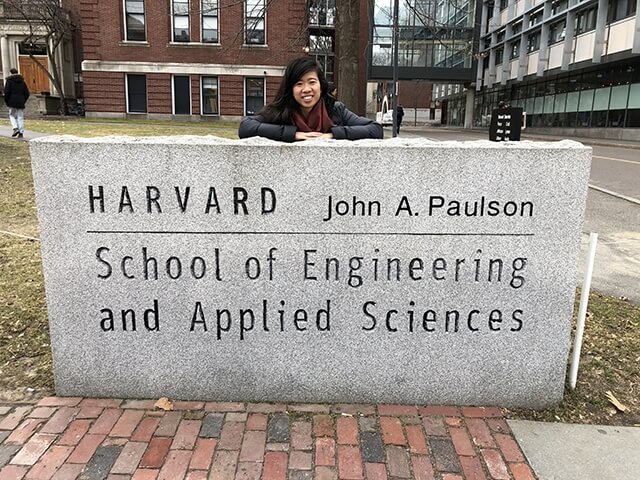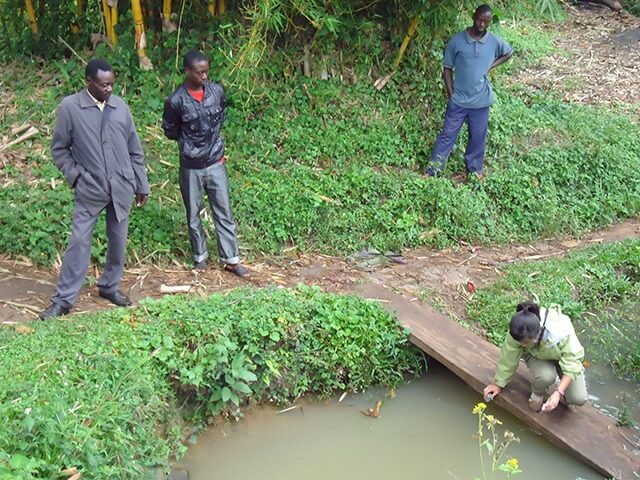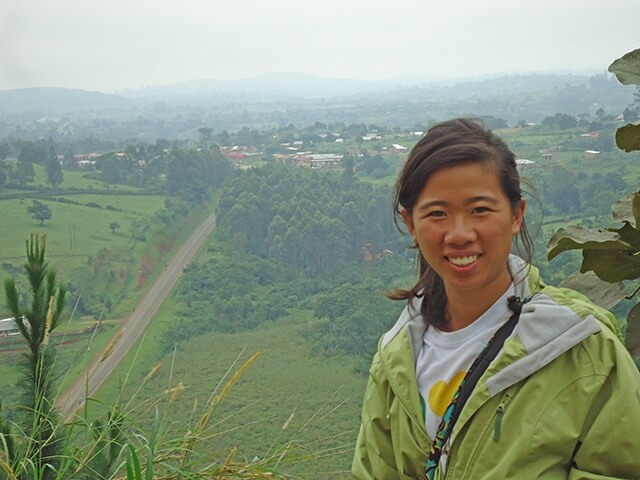Grad student Mona Dai is using data science to shed light on potential water pollution hotspots. (Photo provided by Mona Dai)
Is the water coming out of the tap safe to drink?
Few who live in the U.S. pause to ask that question before taking a sip, but drinking water safety can be a major concern in areas with aging water treatment technology.
Environmental science and engineering graduate student Mona Dai is using data science to shed light on potential water pollution hotspots, drawing on more than two decades of data from the Environmental Working Group and the United States Environmental Protection Agency.
“We are trying to predict where concentrations of heavy metals are particularly high or low, and whether there are certain treatment technologies or other factors we can associate with those levels,” said Dai, a Graduate School of Arts and Sciences student who is working in the lab of Elsie Sunderland, Gordon McKay Professor of Environmental Chemistry at the Harvard John A. Paulson School of Engineering and Applied Sciences. “We want to give individuals and public officials knowledge they can use to improve health outcomes.”
Dai’s interest in water pollution began when she was in eighth grade. She recalls watching a documentary in school about oil spills in the Niger Delta, and thinking about how unfair it was that people didn’t have clean water to drink.
As a civil engineering major at Duke University, she jumped at the opportunity to help improve access to clean drinking water during three summer work trips to Uganda and Togo.
Dai in the Kyenjojo District in Uganda in summer 2014 taking a water sample at a local drinking water source for a village. (Photo provided by Mona Dai)
In Uganda, she worked to develop ceramic filters that could cheaply and efficiently disinfect drinking water, and in Togo she helped build latrines for a village that lacked a sanitary sewer system.
“I learned that you have to be very flexible. You can’t make a rigid plan when you are doing this type of work,” she said. “It also taught me the importance of people. You can’t just use science and technology and have that be the only thing you consider when you try to look for solutions. You need local people to buy into the project and people to actually care about it. If only you care, no one is going to actually make any changes.”
After graduating from Duke, Dai joined a civil engineering firm where she designed landfills, but she missed working on projects that directly improved people’s lives. So she enrolled in the Johns Hopkins School of Public Health, where she earned a master’s degree in environmental health.
As an Oak Ridge Institute for Science and Education Research Fellow, she joined the Environmental Protection Agency’s Office of Children’s Health Protection in Washington, D.C. There, she worked to develop a web-based application to help members of the public understand children’s health risk from chemical exposure. For instance, the tool showed how risk levels change depending on how a child was exposed to harmful chemicals, such as by eating contaminated foods or inhaling dust.
The tool is intended to empower state health agencies to focus on the impacts of chemical exposure on children.
“A lot of times, when there is a crisis, these agencies are in a rush, so they only focus on the health of adults,” Dai said. “But children are much more susceptible to contaminants than adults are because they are smaller and much more active.”
Dai in Uganda in 2014. In the background is Kaihura, the village she stayed in during her visit. (Photo provided by Mona Dai)
At the EPA, Dai learned firsthand that the wheels of government turn slowly, but it only increased her determination to work on meaningful projects that could influence science policy.
She was drawn to the Sunderland Lab’s practical work, which helps raise awareness of health concerns people often overlook.
The biggest challenges Dai faces in the lab often come from the data itself; cleaning and preparing such massive datasets is a tedious undertaking. And though the coding process can be painstaking, especially for someone without a computer science background, the potential to make an impact drives her through the day-to-day frustrations.
“Once you get it right, or you get a cool finding, it does feel very satisfying that all those hours you put in finally paid off,” she said. “I appreciate that the projects I am working on now are things that benefit a wide range of people. We’re not just doing this for curiosity’s sake, it is to help inform better decision making.”
For instance, her work could help rural county governments decide how to best spend resources to keep residents healthy, whether that involves releasing a health advisory or investing in technology to treat drinking water for a certain heavy metal.
Looking to the future, Dai hopes to apply her skills in government as a scientific policy advisor.
“You can have the greatest technology, but if policymakers aren’t paying attention, then the research doesn’t have any impact because no one implements it,” she said. “I want to make an impact on science policy.”
Press Contact
Adam Zewe | 617-496-5878 | azewe@seas.harvard.edu


